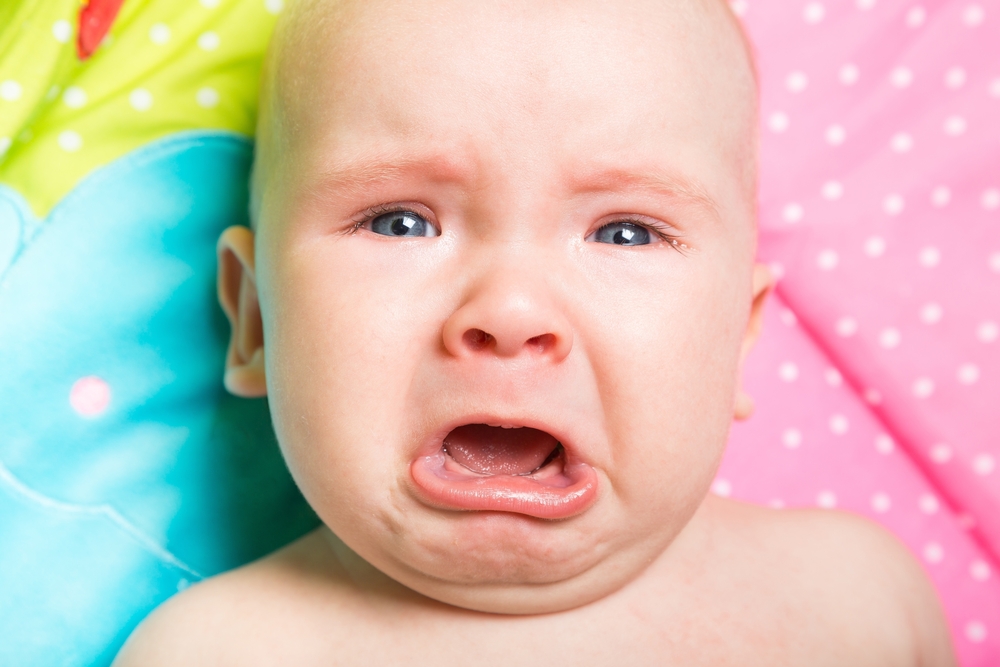
Most newborns fuss and cry for about an hour and a half each day— typically because they’re tired, hungry, or under- or overstimulated. However, some infants cry for more than three hours a day and are much harder to soothe. Persistent crying has often been called colicky crying, although doctors have been moving away from using this term. It usually begins when a baby is 2 or 3 weeks old and hits its peak around 6 weeks. It often starts improving by 2 months and is gone by 3 or 4 months. Getting through the in-between period requires a shift in what you may assume your baby needs.
Smooth the transition.
The word colic comes from ancient Greek, meaning colon. For thousands of years, people thought that babies were crying because they had intestinal pain. Of course, babies can have intestinal sensations, but there are several ways we know this type of crying doesn’t arise from pain. For example, going out for a car ride or turning on a hair dryer for white noise works to calm a lot of babies, but it wouldn’t do anything for pain. I believe that babies are born three months before they’re truly ready to interact with the world. I call this period the “fourth trimester.” That’s why the best way to soothe your baby is to help recreate the sensations she was accustomed to before birth. Inside the womb, there’s constant motion and sound—it’s louder than a vacuum cleaner 24/7. Your baby heard noise from the outside, like voices, as well as inside, like your heartbeat. She also felt a jiggling motion every time you walked. But when you bring your baby home, everybody says, “Tiptoe—the baby’s sleeping!” And you put her in a flat bed in a quiet room by herself, which is sensory-depriving for a baby who’s used to a rich environment of sensation. She can take it for only so long, and by the end of the day she loses it. That’s why people talk about the “witching hour.”
Improve your soothing.
When you imitate the experience your baby had in the womb, it triggers a calming reflex, which is like an off switch for crying. As I outlined in my DVD and book The Happiest Baby on the Block, the 5 S’s can help simulate that womblike sensation. They are: swaddling until he is old enough to roll over; holding him on his stomach, side, or over your shoulder (for calming, but never for sleeping); loudly shushing; swinging; and offering a pacifier for sucking. These work for non-colicky criers too; the persistent ones are just more sensitive and get more upset by either too much stimulation or too much quiet. They need more rhythmic calming throughout the day to keep on an even keel. It also helps to carry your baby around, hold him skin-to-skin, go for long walks, do massage, use white noise, and put him in a swing or my SNOO smart sleeper. All these things won’t just make him feel happy; they’ll activate that calming reflex. And the more you do them, the longer your baby will stay tranquil. It’s like putting a deposit in the bank.
Some parents are tempted to reach for probiotics to quiet crying. Probiotics are a million-dollar industry, but they are probably not a solution for the majority of fussy babies. Although small trials have suggested that they help some babies, a larger study published in The BMJ (formerly the British Medical Journal) found that giving probiotics to breastfed or formulafed infants with colic does not appear to have any benefit. Ultimately, a lack of healthy bacteria in the gut can’t be the cause of crying in most cases. We know this because breastand bottle-fed babies have the same incidence of colic yet have a very different balance of intestinal flora.
Know when to get help.
When the 5 S’s don’t work, 90 percent of the time it’s because you need to tweak your technique. If you’re doing them correctly and they still don’t work, then your baby is telling you that something else is going on. Occasionally, a baby who cries for three hours or more a day does have some sort of medical problem. She may have a food allergy, acid reflux, or a hernia. Those issues may come out of the blue; your baby has been behaving normally and one day she starts screaming and acting strange. If that happens, you should call your doctor.
Fortunately, persistent crying is not psychologically or physically damaging for babies. It can, however, cause very serious problems for parents. It may trigger postpartum depression, marital stress, child abuse, even car accidents. If your baby won’t stop crying, you might start doing unsafe things, like bringing her into bed with you. It can also encourage unhealthy behavior: You may start overeating because of the stress and stop exercising because you’re tired. Even though it doesn’t require medicine, crying is not trivial. It’s an important issue that needs to be addressed.
Parents Magazine

